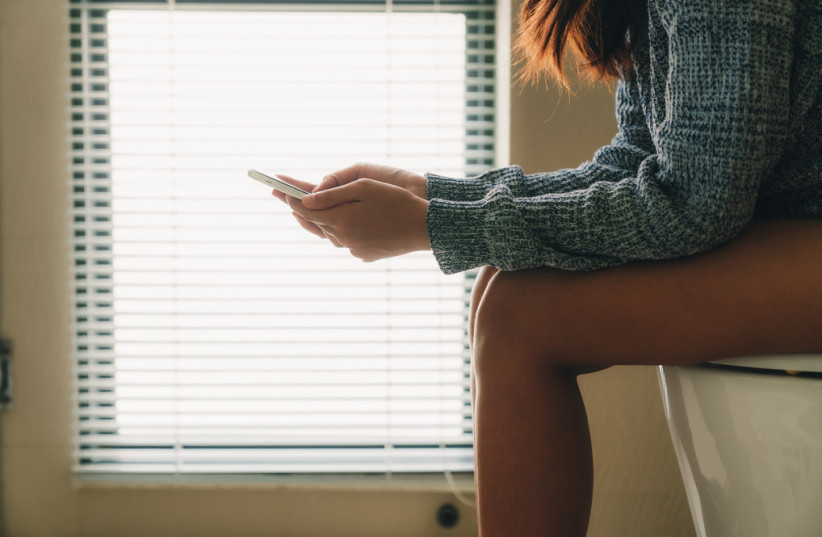Today's easy access to smartphones, tablets, and other handheld devices leads people to spend an excessive amount of time sitting on the toilet. This habit sounds harmless, but can cause various health problems over time. Alexia Buchris, a proctologist and gastroenterologist in the Meuhedet Health Maintenance Organization, shared practical, easy-to-follow tips to reduce these risks.
The risks
- Hemorrhoids: One of the most common health problems associated with prolonged sitting is hemorrhoids. When a person sits for a long time, especially on a hard surface, it puts pressure on the veins that can lead to the development of swollen and inflamed blood vessels, called hemorrhoids. This is a phenomenon that causes discomfort, pain and even bleeding during bowel movements.
- Intestinal stretching: Prolonged sitting in which the body is in a relaxed state can also lead to intestinal tension and difficulty in passing stool efficiently. This can cause straining during bowel movements which can increase the risk of constipation.
- Dysfunction of the pelvic floor: Sitting too long may also contribute to dysfunction of the pelvic floor. The pelvic floor muscles support the pelvic organs, including the bladder and rectum. Prolonged sitting may weaken these muscles over time, leading to problems such as urinary incontinence, prolapse of the pelvic organs, and difficulty emptying the bladder completely.
- Limit the time spent sitting in the bathroom: Try to limit the time spent sitting only to the time required. Avoid prolonged sitting, you can set a timer to remind yourself to get up or move after a reasonable period of time.

The solutions
Maintain good posture: When using the toilet, maintain good posture to reduce the load on the pelvic floor and lower back. Sit with your feet flat on the floor and your knees slightly higher than your hips. Avoid slouching or leaning too far forward.
- Use a stool: It is recommended to consider using a footstool to raise your legs while sitting on the toilet. This can help mimic a crouching position, which is a more natural position for bowel movements and may reduce the risk of straining.
- Drink: It is important to keep the digestive system hydrated and eating foods rich in fiber. A diet rich in fiber, along with consistent hydration will help regular bowel movements and prevent constipation. The fibers help to soften the stool, make it easier to pass, and reduce the need for prolonged sitting in the toilet.
- Seek medical advice: If a person experiences, persistent discomfort, pain, or other symptoms associated with prolonged sitting on the toilet, he should promptly seek medical advice. A medical professional can provide personalized recommendations and treatment options to address specific concerns.
Simple lifestyle changes and following these simple tips can help prevent potentially serious health problems. Moderation is key, even when it comes to bathroom breaks.
